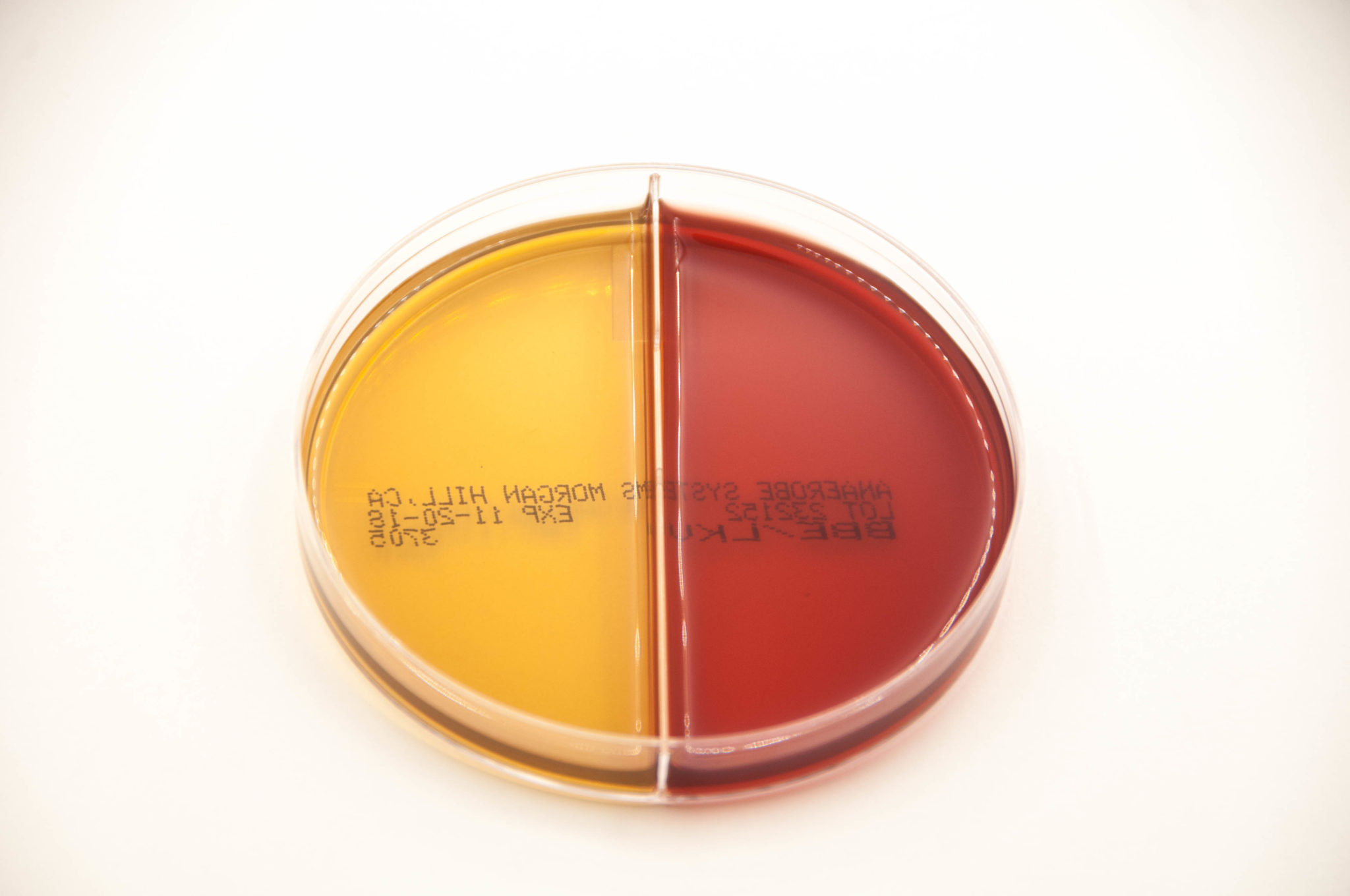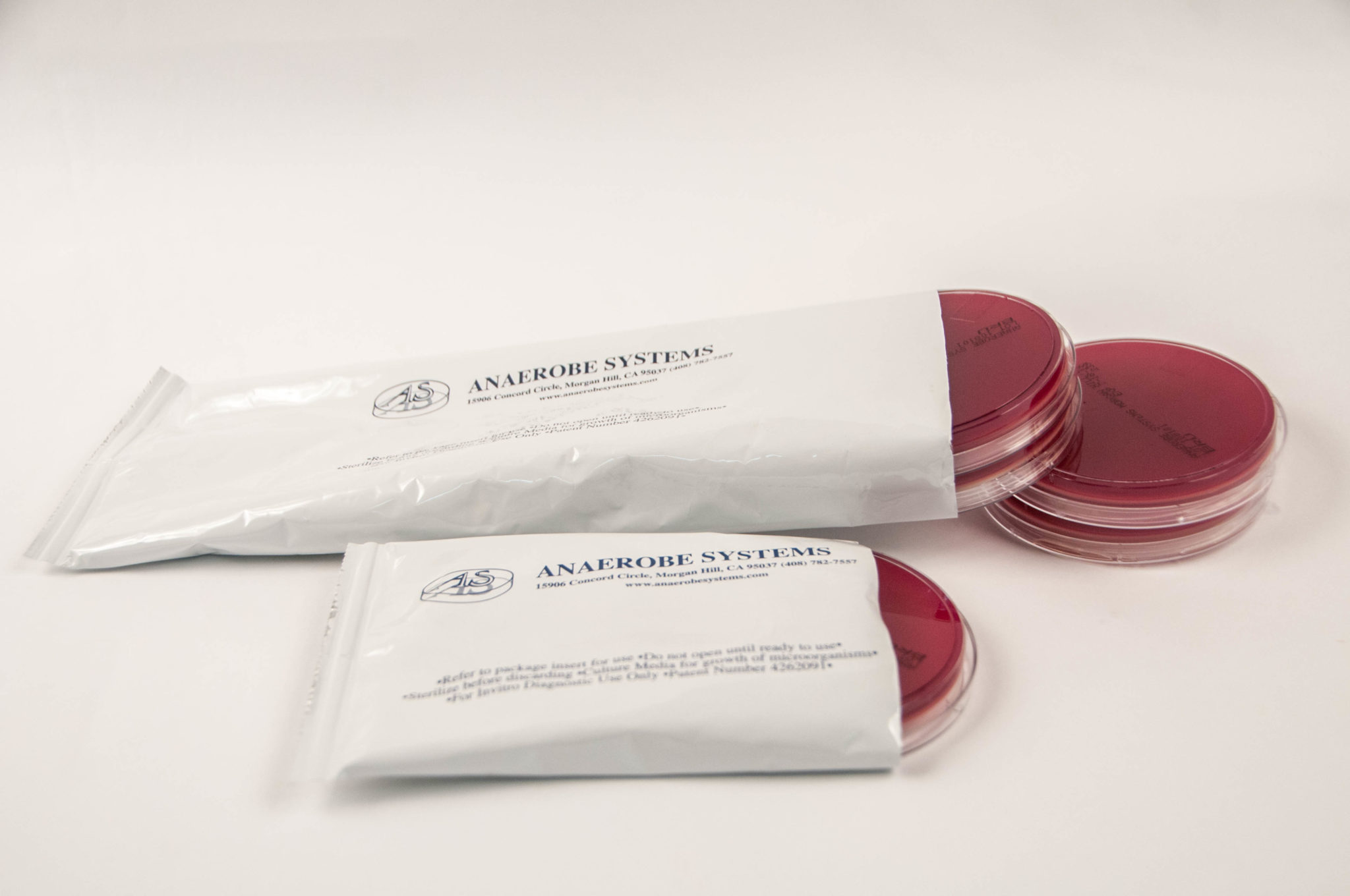BBE – Product Description & Summary
BBE agar contains casein, soy peptones, hemin, and vitamin K1 as the nutritive base of the media. Selective agents include gentamicin, which inhibits facultative anaerobes, and bile, which inhibits most gram-positive bacteria and anaerobic organisms other than the B. fragilis group. The addition of esculin and ferric ammonium citrate to the media permits the recognition of esculin hydrolysis by the organisms. The result is a brown to black coloration around the esculin-positive colonies. Bilophila species usually produce black-centered colonies on BBE due to hydrogen sulfide production. Hemin is added as a growth factor and allows testing of catalase production. This media is prepared, stored, and dispensed under oxygen-free conditions to prevent the formation of oxidized products prior to use.
BBE – Interpretation of Results & Limitations
If used properly, BBE agar supports good growth of the Bacteroides fragilis group (B. fragilis, B. distasonis, B. thetaiotaomicron, B. ovatus, and B. vulgatus) and inhibits growth of most facultative anaerobes and most other non-Bacteroides obligately anaerobic bacteria. Members of the B. fragilis group should grow as brown to black colonies surrounded by a brown to black zone in the media, except for B. ovatus and B. vulgatus, which produce catalase.
BBE agar will not provide complete information for identification of bacterial isolates. Additional test procedures and media are required for complete identification. Some organisms that would normally grow on BBE medium may be inhibited. It is recommended that a non-selective medium, such as Brucella Blood Agar (BRU, catalog #: AS-111) also be inoculated from the same clinical specimen to assure recovery of all species present. Some strains of facultative organisms (which should be inhibited) may grow on BBE. A test for aerotolerance should be performed to confirm that each colony type is an obligate anaerobe. Consult reference materials for additional information.
BBE – Quality Control
The following organisms are routinely used for quality control performance testing at Anaerobe Systems.
| Organism Tested |
ATCC # |
Results |
Time |
Special Reaction |
| Bacteroides fragilis |
25285 |
Growth |
24 hrs |
Esculin hydrolysis |
| Prevotella melaninogenica |
25845 |
No Growth |
|
|
| Fusobacterium necrophorum |
25286 |
No Growth |
|
|
| Fusobacterium nucleatum |
25586 |
No Growth |
|
|
| Clostridium perfringens |
13124 |
No Growth |
|
|
| Peptostreptococcus anaerobius |
27337 |
No Growth |
|
|
| Staphylococcus aureus or Enterococcus faecalis |
25923 29212 |
Inhibited to No Growth |
|
|
| Escherichia coli |
25922 |
Inhibited to No Growth |
|
|
| Proteus mirabilis |
12453 |
Inhibited to No Growth |
|
|
| Propionibacterium acnes or Clostridium difficile |
6919 9689 |
No Growth |
|
|
BBE – Product Storage & Shelf Life
BBE Storage: Upon receipt, store at room temperature in original package until used. Avoid overheating or freezing. Do not use media if there are signs of deterioration (shrinking, cracking, or discoloration due to oxidation of media) or contamination. The expiration date applies to the product in its original packaging and stored as directed. Do not use product past the expiration date shown on the label.
BBE Shelf Life: 90 days from date of manufacture.



